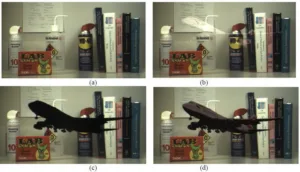One would think that light field displays (LFDs), which are normally used as glasses-free displays for 3D images, would not be needed in HMDs, especially 3D VR HMDs. It turns out this is not correct, although the 3D properties of LFDs are not needed. Instead a different property is needed, the fact that the LFDs force the human eye to accommodate to the proper distance for a displayed object. By accommodating to the correct distance, the problem of vergence/accommodation mismatch found with normal stereoscopic displays, including HMD stereoscopic displays is avoided. In see-through AR displays the problem is more accommodation than vergence, as was already discussed by several papers in Session 51.
Regardless of the title, only two of the papers, 72.1 and 72.2 describe light field displays. The other two 72.3 and 72.4 describe variable focal length lenses also intended to correct accommodation problems.
Paper 72.1 titled “An Integral-imaging-based Head Mounted Light Field Display Using a Tunable Lens and Aperture Array” was presented by Hekun Huang of the University of Arizona. The paper was a Distinguished Student Paper and is available for download from J-SID. It describes a light field display coupled to a tunable focal length lens to correct accommodation errors. Two of the claimed advantages of using both technologies instead of either one alone is improved image quality and reduced system size.
 System from the U. of Arizona using both a light field display and a tunable lens to provide accommodation correction in a AR or VR display. (Image: U. of Arizona)
System from the U. of Arizona using both a light field display and a tunable lens to provide accommodation correction in a AR or VR display. (Image: U. of Arizona)
Paper 72.2 titled “A High Resolution Near Eye Light Field Display with Fast Reconstruction Speed” from Mali Liu at Zhejiang University described an algorithm that rapidly converted conventional images into light field images. The goal of this is to reduce the latency time by reducing the time to compute the image for the LFD.
Paper 72.3 titled “Design Investigation of Tunable Liquid Crystal Lens for Virtual Reality Displays” was from Afsson Jamali at Kent State with a co-author from Intel. Most LC lenses are monolithic and relatively thick which gives them both high drive voltages and slow response speeds. This lens was a fresnel lens, reducing the thickness and drive voltage and response time.
Paper 72.4 was titled “Switchable Lens based on Cycloidal Diffractive Waveplate for AR and VR Applications” and was from Yun-Han Lee at the University of Central Florida. This is another LC lens design said to have advantages in fast response time, low chromatic aberration, and low operation voltage.

